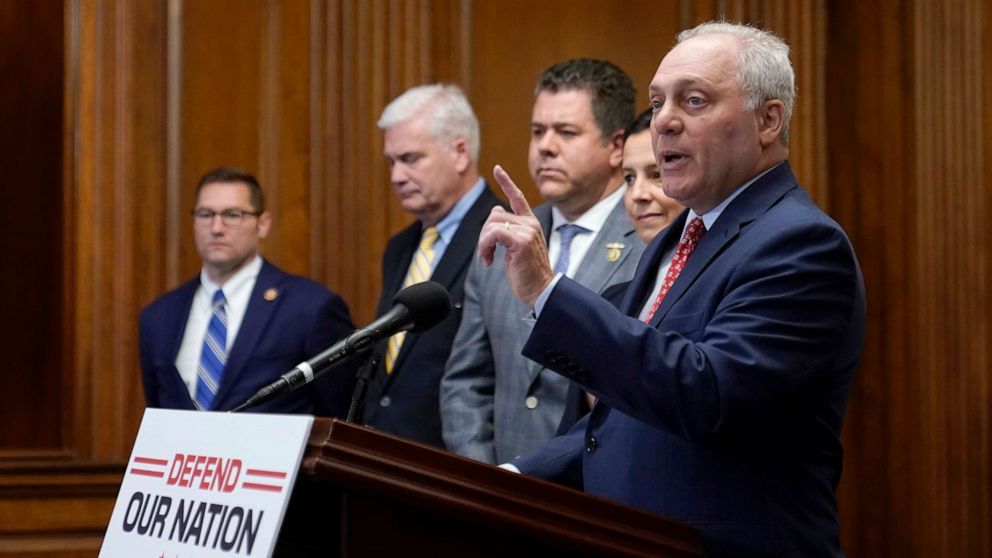#Mask mandates reemerge amid upturn in COVID-19 cases

The recent upturn in COVID-19 cases in some regions has spurred a handful of entities around the country to reinstate mask mandates, reigniting the debate over what place masking requirements have in an era of living with the coronavirus.
Earlier this week, Hollywood movie studio Lionsgate asked its employees to wear masks on certain floors of its facilities in Santa Monica, Calif., in response to a few staff members testing positive for COVID-19.
Kaiser Permanente began to require staff, patients and visitors to wear masks at its facility in Santa Rosa, Calif., this week in response to a spike in cases. Upstate Medical University in New York announced a similar decision last week for two of its hospitals.
Schools including Rutgers University in New Jersey and Morris Brown College in Georgia have issued mask mandates for their respective campuses, with the Atlanta-based school reinstating masks as a two-week precautionary measure.
Georgia Rep. Marjorie Taylor Greene (R) spoke out against the news from Morris Brown College, writing on X, the platform formerly known as Twitter, “Americans have had enough COVID hysteria. WE WILL NOT COMPLY!”
Nationally, hospitalizations due to COVID-19 have been rising the past few weeks. Data from the Centers for Disease Control and Prevention (CDC), however, shows that hospital admission rates are still considered low in 97 percent of the U.S.
According to Marcus Plescia, chief medical officer for the Association of State and Territorial Health Officials (ASTHO), the necessity of mask mandates will come down to a case-by-case basis, adding that publicly available data should inform these decisions.
“I think the new approach is we want to make that information available to the public and give people some warning that there may be some increases in disease activity,” Plescia said. “And then people decide for themselves sort of how they want to react and what kind of precautions they want to take.”
Mask-wearing became highly politicized over the course of the pandemic, with opinions on whether businesses, schools and government agencies had the authority to make such requirements divided largely along partisan lines.
The Supreme Court ruled in 2022 that the White House did not have the authority to enforce a vaccine-or-mask mandate on companies with 100 or more employees, though individual businesses can uphold their own policies on the matter.
The court also ruled last year that the Transportation Security Administration could impose mask mandates on planes, trains and other forms of transport, leaving mask requirements as an option for the federal agency.
Clinicians and public health experts maintain that high-quality N95 masks help in reducing viral spread in communities.
The vast majority of people have some level of antibodies against COVID-19, either through prior injection or vaccination. The updated COVID-19 shots for this fall are expected to become available sometime in September, pending approval by federal regulators.
As the pandemic went on and the U.S. gathered more tools for treating and limiting the spread of COVID-19, health experts advised that people use mitigation methods based on their own individual risk assessments.
Schools and businesses will similarly have differing levels of risk they’re willing to tolerate, with the onus of mask mandates shifting from the public to the private sector, Plescia said.
But he doesn’t think the U.S. is currently in a state where all workspaces should be expected to bring back mask requirements, with a few caveats. Nursing homes and health care facilities are two settings where he said masking rules are advisable, as people in these spaces are often at a higher risk for severe illness.
There is no universal threshold for when masking should be deemed appropriate, but the CDC has established some some recommendations for counties. Hospital admission levels have replaced the COVID-19 community levels as the key indicator for such decisions, as case surveillance largely diminished.
The CDC categorizes admission levels as green, yellow and red. If hospital admission rates in a county are classified as yellow or red — when there are 10 to more than 20 COVID-19 hospital admissions per 100,000 people — then it is recommended that people at a high risk of getting very sick wear a mask while at an indoor, public space.
When COVID-19 hospital admissions are red, this recommendation is applied to everyone, and high-risk individuals are advised to avoid public “non-essential indoor activities.”
Just 3 percent of U.S. counties are currently in the yellow category, and none are in the red.
Heading into the respiratory viral season, however, Plescia noted that COVID-19 should not be the sole factor informing viral mitigation measures.
“We’re hoping we won’t see a situation where things are as dire as they were a couple of years ago,” Plescia said.
“When you take flu and RSV and, you know, if we had a little bit of a surge in COVID … the biggest concern right now is hospitals becoming overwhelmed. And we had a little bit of that last year that is very much in everybody’s minds and concerns right now.”
Copyright 2023 Nexstar Media Inc. All rights reserved. This material may not be published, broadcast, rewritten, or redistributed.
If you liked the article, do not forget to share it with your friends. Follow us on Google News too, click on the star and choose us from your favorites.
For forums sites go to Forum.BuradaBiliyorum.Com
If you want to read more News articles, you can visit our News category.




